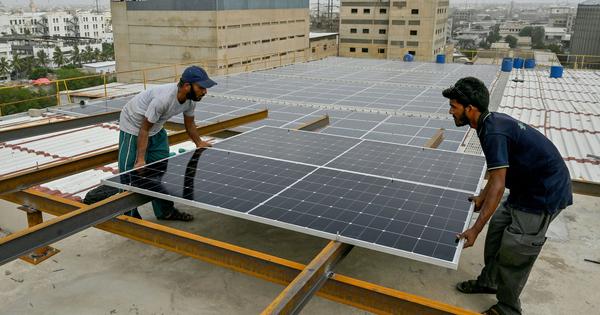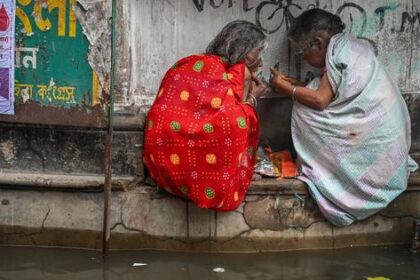South Asian countries embrace renewable energy to reduce reliance on fossil fuels and enhance energy security.
South Asian countries are increasingly adopting renewable energy sources as a strategy to reduce their dependence on costly fossil fuels and to address issues related to unreliable power supply. This transition is part of a broader global shift, where for the first time, renewables have surpassed coal as the leading source of electricity, according to projections from the International Energy Agency. However, the pace of this transition varies significantly across regions.
While the shift away from fossil fuels has slowed in more developed regions like the United States and the European Union, it has gained significant momentum in developing countries. Notably, China has garnered attention for the scale of its energy transition, but many smaller nations are also rapidly embracing clean energy technologies, electric vehicles, and battery storage. Their motivations often extend beyond environmental concerns, encompassing factors such as reducing reliance on volatile international markets, enhancing energy security, and boosting local economies.
In Pakistan, a notable surge in solar energy adoption is partly a response to rising electricity prices and the unreliability of the power grid. The country’s push towards solar energy is indicative of a broader trend among South Asian nations, as they explore various pathways to harness the benefits of clean technology. Each country’s approach is shaped by its unique challenges and opportunities, demonstrating that there is no one-size-fits-all solution to the clean energy transition.
Bhutan, known for its reliance on hydroelectricity, faces challenges due to seasonal variability in power generation. Most of its hydro plants operate on a run-of-the-river basis, which leads to reduced power output during dry winter months. As demand for electricity has surged due to rapid industrialization, Bhutan has had to import power from India during these peak times. In response, the government is diversifying its energy sources, with plans to install up to 300 megawatts of solar power, alongside ongoing efforts to blend hydroelectricity with solar, wind, and biomass energy.
Nepal’s experience illustrates another aspect of the region’s energy transition. The country historically imported all its petrol from India until an unofficial blockade in 2015 caused significant supply shortages and price surges. This crisis highlighted Nepal’s vulnerability and prompted the government to initiate a transition to electric vehicles, powered by domestic hydropower, aiming for a 90% share of new commuter vehicle sales by 2030. The rapid growth of electric vehicles is supported by incentives and has led to the emergence of new businesses related to charging stations and maintenance.
Sri Lanka, grappling with an economic crisis marked by severe energy shocks, has recognized the need for a more resilient energy system. The country currently derives about 50% of its energy from renewable sources, primarily hydroelectricity, with ambitions to increase this figure to 70% by 2030. The integration of renewable energy into the grid is being addressed through collaborations with universities and international partners, focusing on innovative solutions to enhance supply reliability.
Meanwhile, the Maldives, which relies heavily on imported diesel for power generation, is implementing a project aimed at transitioning to sustainable energy sources. This initiative focuses on providing renewable energy solutions to approximately 160 outer islands, with an emphasis on economic empowerment for women through solar energy enterprises. The government’s roadmap for 2030 reflects a commitment to a just energy transition, ensuring equitable benefits for local communities.
These examples from Bhutan, Nepal, Sri Lanka, and the Maldives underscore the diverse approaches smaller economies are taking to transition to cleaner energy. Although their motivations are rooted in distinct crises, these nations are transforming challenges into opportunities for a sustainable energy future.







